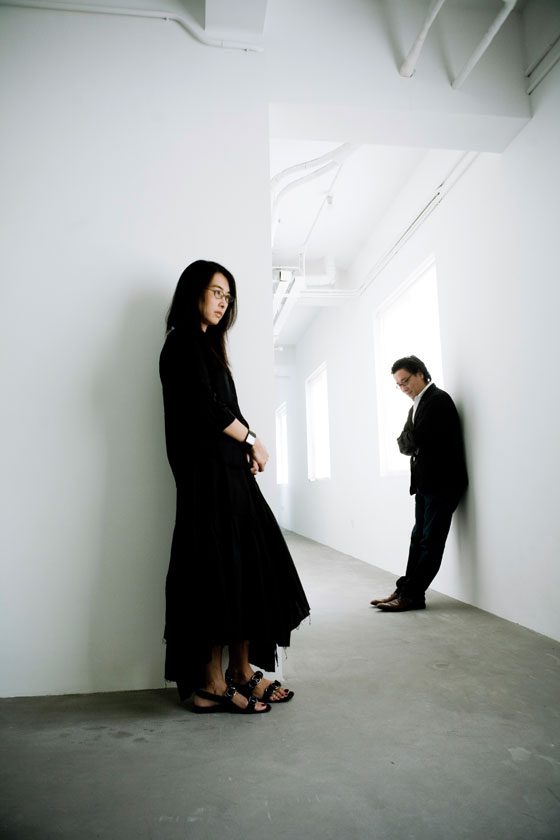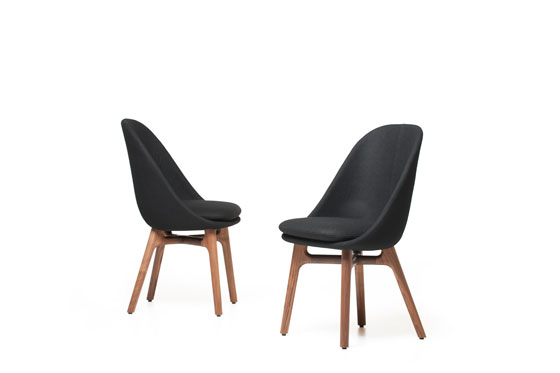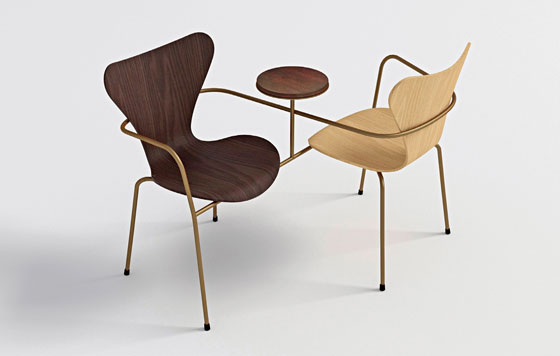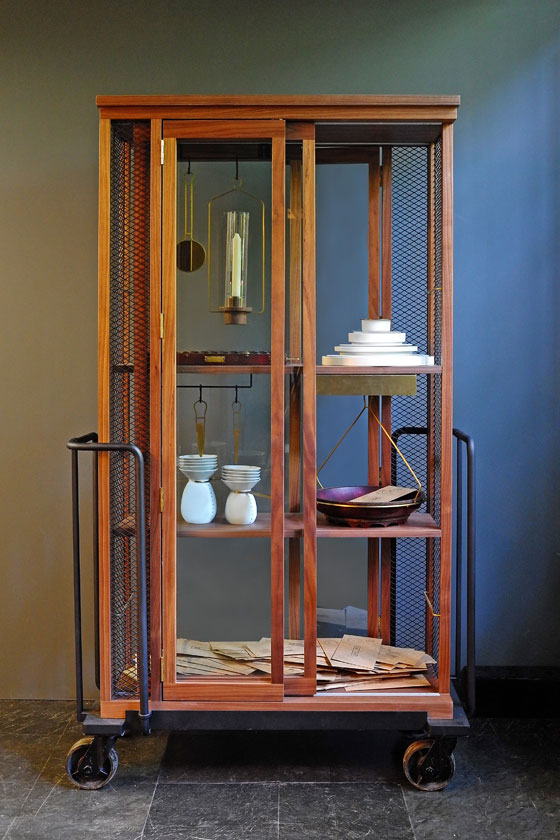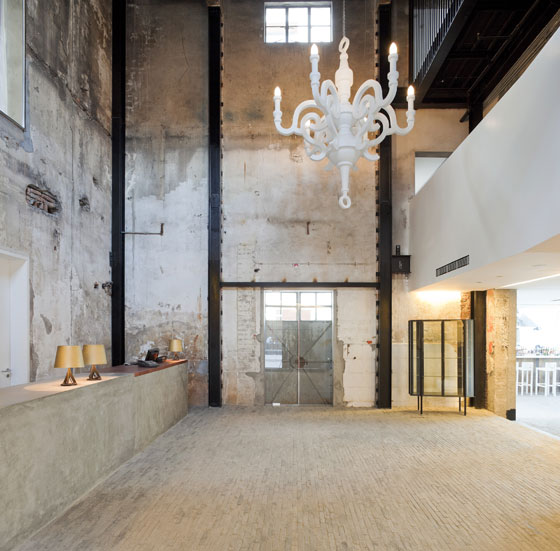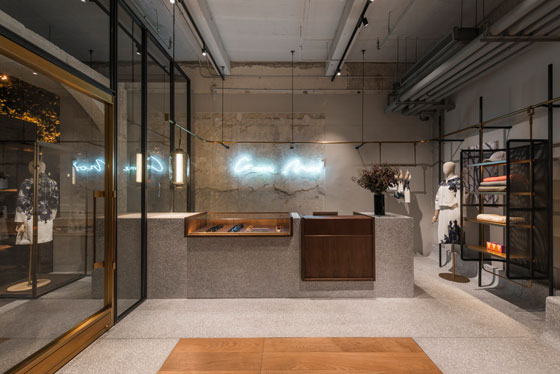Storytelling Asia: Neri & Hu
Text von TLmag
Brussels, Belgien
24.02.16
Architects, designers, entrepreneurs, based between Shanghai and London, Lyndon Neri and Rossana Hu are devoted to their multi-faceted projects, ranging from interiors to designing products and architecture for public or private use. TLmag had the chance to interview them in-between their travels in time and space.
TLmag: Recently appointed as art directors of the Shanghai-based design company Stellar Works, how will you position this brand's DNA in Europe? Will the presence of the factories in Shanghai and France, in Laval, support its creative development between both continents and worldwide?
Neri&Hu: We will reveal most of it in M&O next January. The manufacturing aspect of the brand is of course central to the DNA, but the brand has other aspects that we want to explore.
TLmag: On M&O Paris in January, will you introduce new collections and make a 'special' statement?
N&H: The collection will be a continuation of what we have already been doing with them. The brand identity will be stronger and clearer.
Extrude stools are an abstracted representation of two auspicious symbols commonly found in chinese domestic spaces: bamboo (竹子 zhu zi); lotus root (莲藕 lian ou), for De La Espada
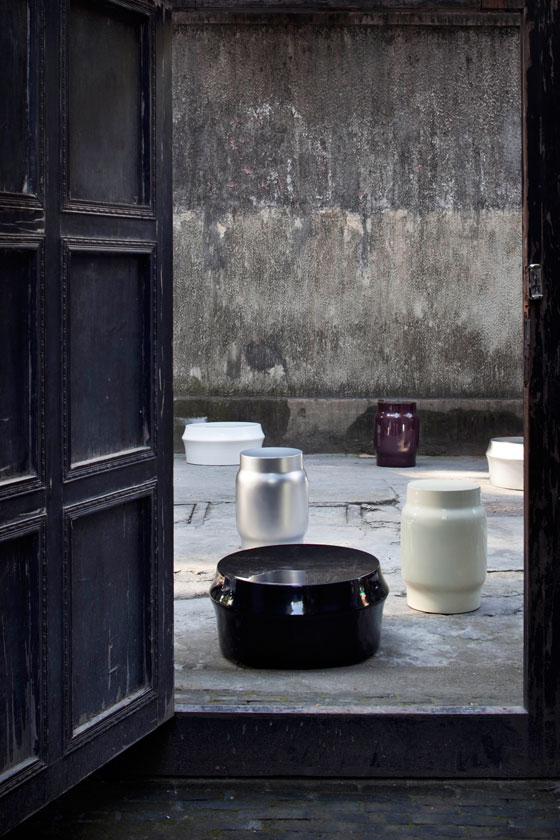
Extrude stools are an abstracted representation of two auspicious symbols commonly found in chinese domestic spaces: bamboo (竹子 zhu zi); lotus root (莲藕 lian ou), for De La Espada
×TLmag: More intimate and discrete but revealing multiple stories, does the wooden cabinet of curiosities shown at Rossana Orlandi past April and the seven objects to go inside – one to represent each of the seven deadly sins – serve as a metaphor to enter into the world of Stellar Works, bridging the narrative and cultural heritage of your Asian roots? Is it a first step to entering into your world?
N&H: You could interpret it that way. It could also be seen as a process to draw the audience of design into an object closer to themselves and allow them to engage with a brand following a path that is not often offered. It's an effort to inject fresh content into design objects, and the narrative and storytelling become personalized within each person's "confession". There are multiple readings into this project, and that's why it's so fascinating.
TLmag: You have the great ambition to promote the European design brands, particularly in China, thanks to your Research & Design practice and Design Republic. By manufacturing your collections through De la Espada, what has been the impact on your work and projects, both in Europe and in Asia? With Shanghai, London is still your main headquarters in Europe. What about Paris in the future, the so-called 'Capitale de la Création'?
N&H: The collaboration with De la Espada started a few years ago, and we were drawn to them by the refined craft, and at that time we had a small collection of products which were not well made. Working with them allowed us to improve these designs and to access to the international market. We were very pleased to have this opportunity. Since then, the collection has been introduced to many cities and has continuously been promoted very well in different parts of the world. We always welcomed exchange and dialogue, and this effort to bring our designs to the world is one way of doing it. Paris is a great place to be and it would be very easy to work on a project there from our London office.
TLmag: As Designers of the Year in 2015 on M&O Singapore as well as on imm Cologne with Das Haus, what is your personal feel towards this dialogue which happens more and more between Asia and Europe? How will China, but also Taiwan, Korea, Indonesia and Japan influence us in a near future?
N&H: It will be like blending two ingredients together and stirring more and more, and the mixture will be something completely different from before. Asia will definitely start to influence the world in terms of design in ways that the world has never experienced, but this process will be slow. The world will be confronted with the Eastern philosophy and culture through the designs, and as seen in the past masters, how their works have been made different by Asian sensibilities, we will see that in designs of the West.
TLmag: You've been involved in so many multidisciplinary projects, what is your approach to scale? On your website, you speak about your practice but also your objects. Is the modern Chinese aesthetic and craftmanship more and more enhanced within your practice? Is it going to be the direction you want to take with Stellar Works and with your own so-called Objects by integrating not only the Chinese meaning but also the Asian identities as local and global at the same time?
N&H: We certainly are interested in finding a new Chinese abstraction in our approach to design. Since we are not so much interested in style, in architecture, we tend to explore the essence of Chinese spaces like courtyard and lane houses in order to understand how they could apply to our work. The blurring of boundaries is one overall issue we like to tackle, and in architecture, one of those is the boundary between exterior and interior. This allows a new way of looking at conventions, and that's what we like to do, to push the boundary and see where we can get to. That being said, we find ourselves more and more shying away from talking about it too explicitly. We now think that the culture of who we are as people will come out naturally in who we are as designers. We don't need to shout to people and point at our black hair and say, look, we are Asian! We just walk out and people can see that. Our work should just stand for what it is and who we are, in a quiet and natural way. Cultural boundaries are being blurred also everyday, so Chinese isn't so Chinese anymore, and French isn't so French either.
TLmag: In this past decade and upcoming years, what are for you the most meaningful architectural and interior design projects you have been working on since you've founded Neri & Hu in 2004?
N&H: To name some of them: Waterhouse, Design Republic - Design Commune, Rethinking the Split House, Cluny.
TLmag: Following you on instagram, I've the feeling that you are in love - you and Rossana - with Scandinavian Design. I remember seeing recently your Arne Jacobsen series 7 "Syver Chair"’s reinterpretation for Fritz Hansen. What is your relationship to the Nordic creative scene?
N&H: We have a project working for a client from Denmark, although the project locates in London. We work with many Danish brands, and we do love the sensibilities of Scandinavian.
TLmag: Many of your projects concern retail environments such as restaurants and boutiques, and they are not only for already reknown brands. Does the just-delivered Comme moi interior design, the new fashion brand founded by the supermodel Luyan have more meaning for you than collaborating with large hospitality groups such as Le Méridien or Swire Group from HK?
N&H: Every project is different, and with each specific one we explore different things, so it's hard to segment them into "large brand" and the others. However, we do find freshness and new energy when it's a young brand that's in the making, because there are fewer rules and we are allowed more freedom.

